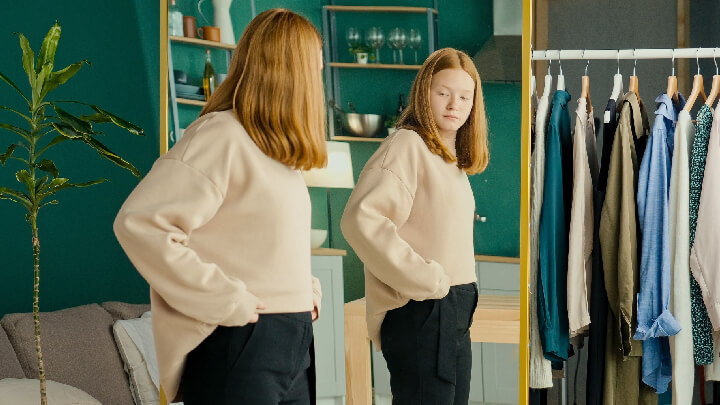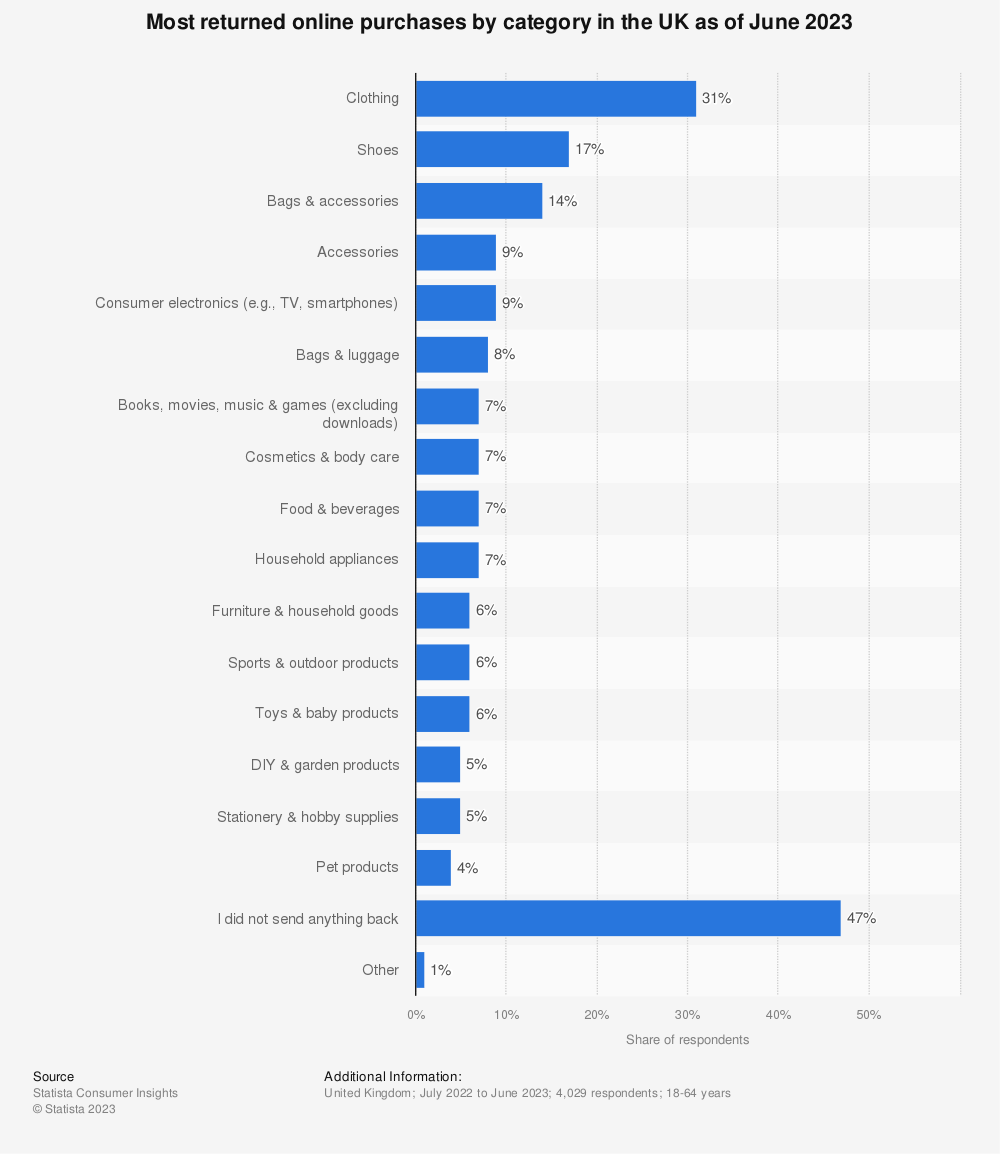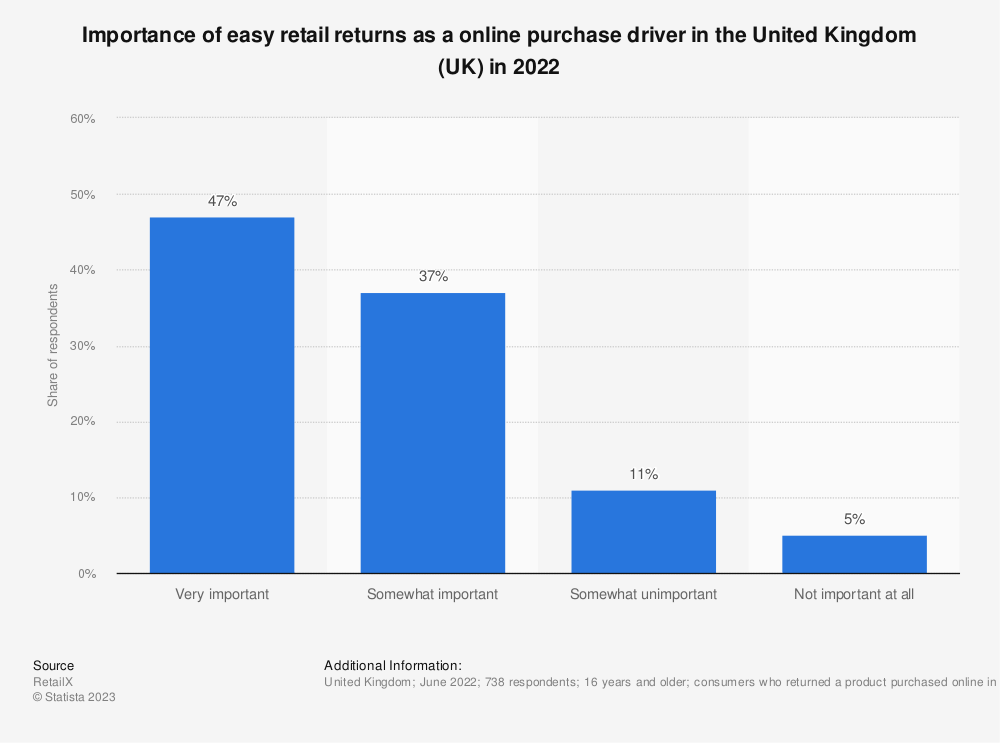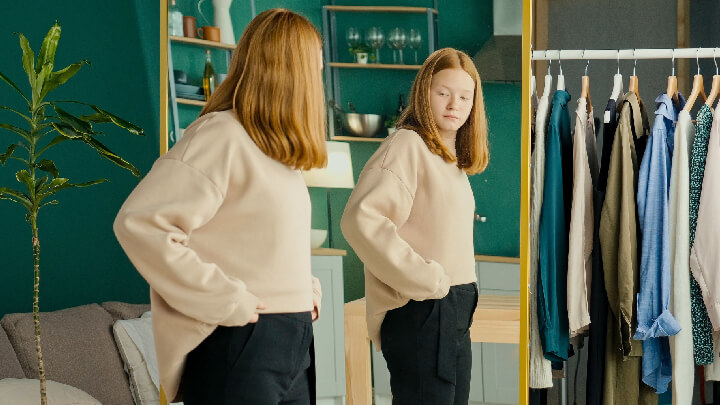Google Universal Commerce Protocol: The Impact on Your Visibility
What is Google's Universal Commerce Protocol (UCP) and how does it impact visibility in product searches using artificial intelligence?

Returns are very common in e-commerce, and no industry deals with them as much as the fashion industry does. Online shop owners certainly have mixed feelings about them. Offering free returns can be a conversion tool that inspires users to try out a new retailer without feeling much of a risk. On the other hand, dealing with returns can be costly and should certainly be a major component in a business’s annual costs.
Today, we’ll have a look at some ways that fashion and clothing retailers can reduce returns. This article is split into two parts:
Before we delve into some helpful tips, it might be interesting for you to examine some statistics connected to returns in the e-commerce industry.
In the UK, a consumer survey by Statista reveals that clothing is by far the item that is most likely to be returned (31%).

Source: Statista
Another consumer survey of over 700 respondents (16 and older), only 29% of consumers “never" returned a product. As you can see, 48% “sometimes” return products, 15% return products “most of the time”, and 8% return products “all of the time”. This means, there is a good chance that a sizeable percentage of your customer base returns your products.

Source: Statista
As we said in the intro, “easy returns” can be influential when it comes to completing a purchase.
A combined 84% of UK shoppers see easy returns as either “very important” or “somewhat important” as a driving force to their purchase. Therefore, it’s clear that offering returns (particularly “free” returns) is kind of a big deal in the fashion industry.

Source: Statista
Speaking of free returns, across major western markets, we can see that the majority of consumers expect retailers to cover the costs of returns. This is particularly true in Italy, Belgium, France, and Spain, which all go beyond 60%. However, the US, the UK, the Netherlands, Austria and Germany are still floating around the 50% mark.

Source: Statista
Another survey that took place in the US shows that 63% of consumers are “much more likely to shop there” if they know an online store offers free returns.
Returns affect every industry, but the fashion industry is affected on a whole other level. Not only are there more intricate costs when it comes to returns in the fashion industry (i.e. processing, logistics, customer service, cleaning, repackaging, etc.), but shoppers return clothing products more often and they even purchase products with the full intent of not keeping them.
Bracketing is a term used for shoppers who purchase multiple sizes or colours of a single item in order to pick out the best one, then returns the variations they don’t want to keep. Confusing clothing sizes (31%) was the top reason for carrying out such practices (we’ll tackle this topic in the sections below!).

Shutterstock/Alex_Maryna
What consumers don’t know is that much of this (returned) clothing can’t or simply isn’t resold. The reasons vary, including damaged products or it being “out of fashion”. Optoro estimates that retailers lose $33 for every $50 of goods a customer ships back.
To put this into context, the value of the UK clothing and footwear returns market is set to grow to £4.4bn in 2026. This refers to the monetary retail value of the products that are returned.
Now that we’ve looked at the numbers, let’s have a look at what you, as fashion retailer, can do to reduce your customer return rates:
There’s nothing like a guilt-trip to mess with someone’s head – just ask my mother! All jokes aside, consumers around the world have shown they have an interest in shopping with companies that try to be “greener”.
The awareness is clearly there, but most consumers don’t know the nuances of what goes into returning a product. Try offering them a slight reminder as to why returns are costly and, more importantly, bad for the environment. This may inspire them to think twice before “bracketing”.
You can, for example, display a small text on the checkout page if your system notices the same item is purchased in multiple sizes or colours.
With that said, you’ll have to do your part to help the customer make the right purchase decisions...
Offering detailed product images is an essential conversion tool. However, it can also help make you a more transparent brand (which helps build trust, too!). Last but not least, it helps reduce returns.
For starters, you’ll want to offer more photos. Show the clothing from different angles. Show close-ups of the fabric and stitching. Letting customers know what their clothing looks like up close will help them make more well-informed decisions.
You can also show images of the product on different sized models to set realistic expectations. With that in mind,...
Product descriptions can include information on the model(s) that are seen in the product images.
For example: Model #1 is wearing a size L. They are 181 cm tall.
Besides that, include as much information in the product description that you think would be relevant to a clothing shopper. Include information about the material, how it breathes, looks, shines, whatever.
Product descriptions should also include details on the measurements of the product. Let users know the exact fit of the article in question. You could, for example, create a size chart for your customers in the description. Alternatively, you could include the measurements directly in some dedicated product images for even more transparency!
Dedicate a section of your product page to suggest a size to the user. There are a few ways to do this:
The suggestion could be based on the users measurements. Allowing them to input their height and weight (or body shape) along with other relevant measurements can help customers find the right size for them.
Alternatively, you could make size suggestions based on the user’s previous purchases! This would of course require them to have an account with you. If you can offer this tool, add a small text about creating an account in order to get size suggestions. It could be a great way to get them into your email list as well.
Tools such as Sizify can also help online retailers make size recommendations to their customers.
There are plenty of benefits to adding product reviews to your product pages (e.g. SEO). However, one of the biggest benefits to product reviews is that they can help reduce return rates.
Just like detailed product descriptions and plenty of images help inform potential customers, your previous shoppers can also help visitors make better decisions and avoid returns.
Many of the reviews can help answer questions that your product descriptions don’t. Previous shoppers can give detailed insights into their unique experiences, with information on how the product looks and feels.

Sure, product reviews can be a great marketing tool for you and a shopping tool for your customers, but they can also help you optimise your online shop.
By managing your customer reviews, you can get great insights into what works for your company and what doesn’t.
For example, if a certain product keeps bringing in sub-par reviews, it might be time to reconsider your offer. Being able to analyse the reasons for returns will provide useful feedback for your production and design teams.
Likewise, you can also optimise multiple elements of your website itself (e.g. the checkout process, logistic offerings, payment options, etc.) based on the feedback you receive.
Did you know customer reviews (including service reviews and product reviews) can boost trust for your online business? Obviously, they add an element of transparency to your business. However, they can even help your marketing efforts. By using a Google-certified reviews provider (such as Trusted Shops), you can display your star ratings across Google, including Google Ads and Google Shopping.
Learn more about Trusted Shops Customer Reviews & Google Integration
It might seem obvious to some, while completely insane to others. After all, we looked at a statistic about how “easy returns” and “free returns” were influential in purchase decisions. However, if you implement the tips mentioned above, you’ll boost confidence in every purchase decision. This might be a good reason to consider not offering free returns. In fact, more and more retailers (e.g. Zara, Boohoo) have stopped offering free returns in some markets, including the UK.
Here’s one last set of stats for you to support this:
UK shoppers are willing to pay up to £6.80 to return a product valued at £150 or more. For products of £50, they were willing to spend up to £5.10 to return it, and for items valued at £15, they were willing to spend up to £4.70.
Of course, these numbers will vary a bit from country to country (in the US, shoppers were willing to pay even more for returns than UK shoppers), but it does show a willingness to spend money on returns.
With that in mind, that is why it’s so important to inform customers about their purchase as much as possible before the finalise their purchases.
Returns will always be a part of business, whether online or offline. However, there are ways to inspire customers to buy the right product and avoid buying multiple items with the intent of returning all the ones that “don’t fit”. By optimising your site and adding more transparency about your products, your return rate will surely go down in no time.
13/09/23What is Google's Universal Commerce Protocol (UCP) and how does it impact visibility in product searches using artificial intelligence?
Learn how Trusted Shops enhances your online shop's AI visibility through trust-building elements such as customer reviews and the Trustmark.